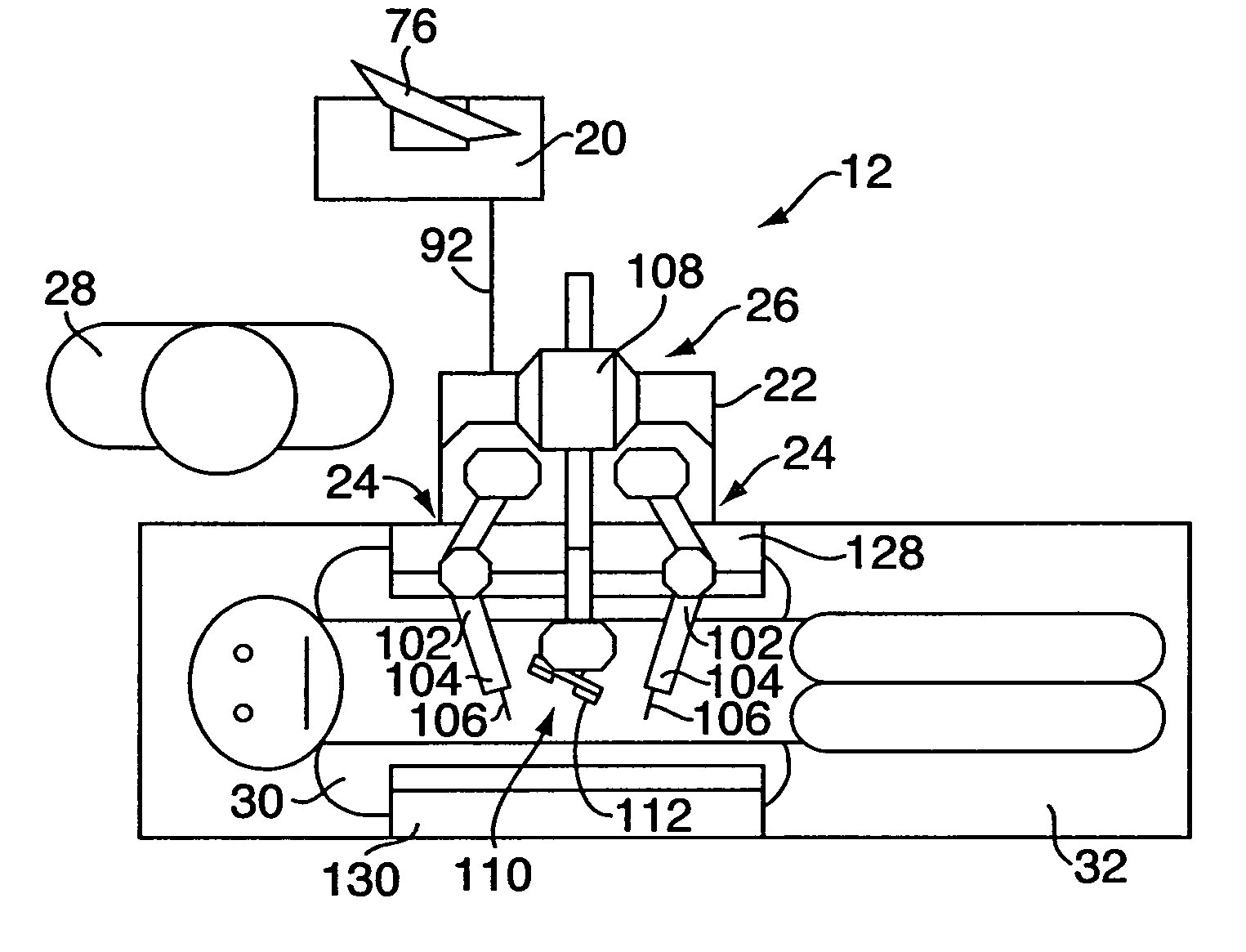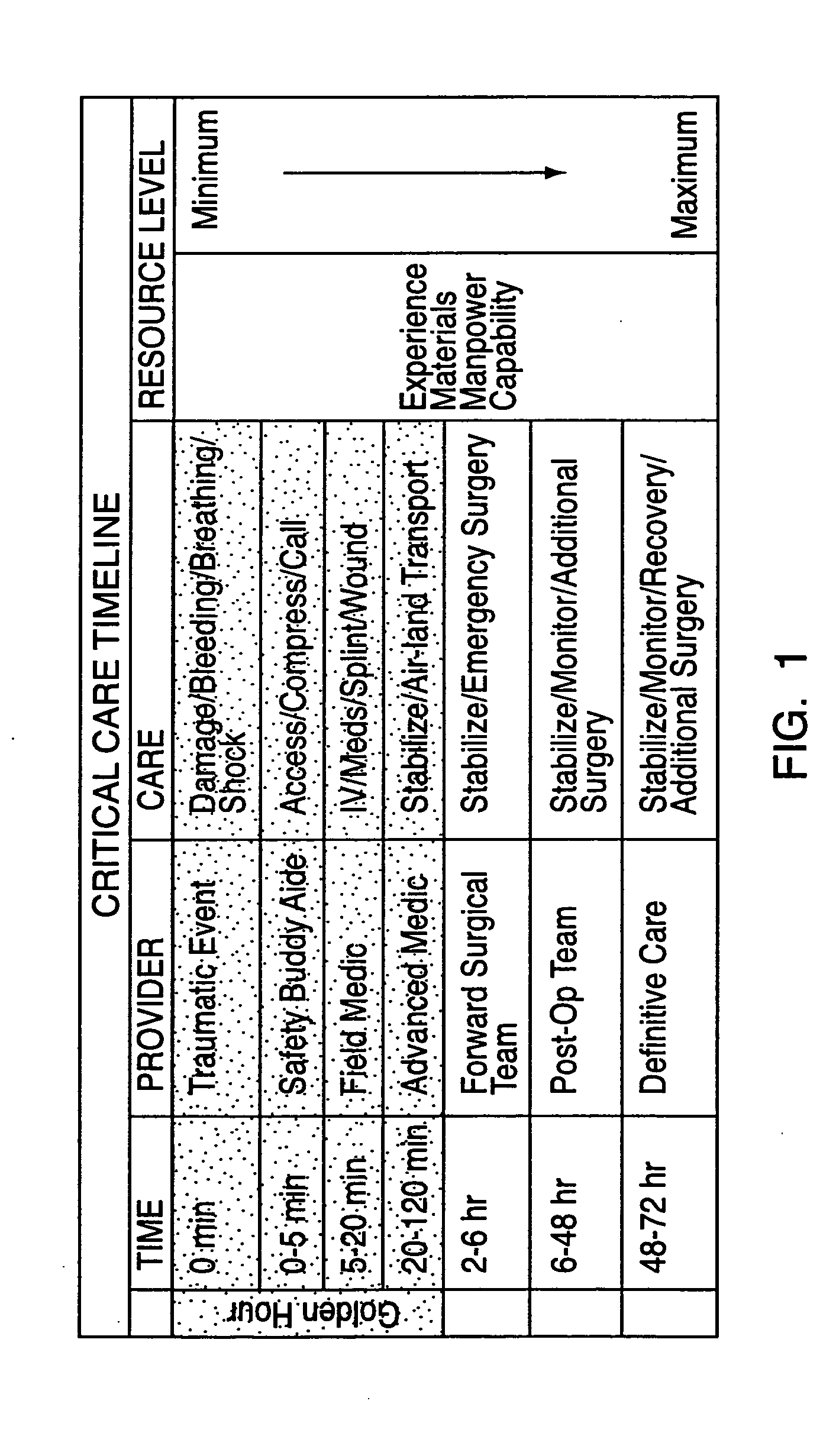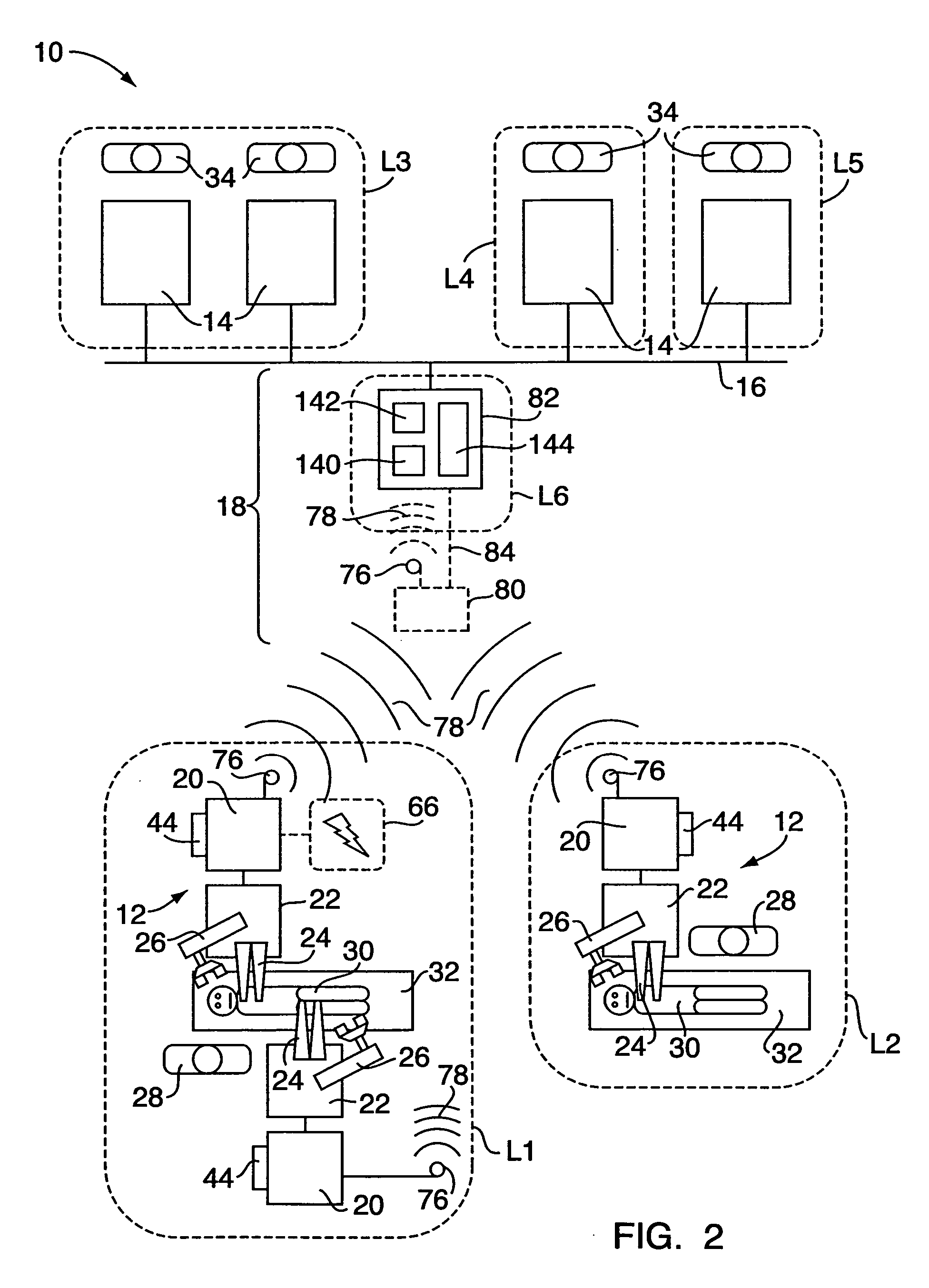Remote augmented motor-sensory interface for surgery
a technology of motor-sensory interface and surgical instrument, which is applied in the field of surgical devices, can solve the problems of not being able to easily or quickly transport a wounded soldier or other patient to a medical facility, unable to solve problems such as trauma, bleeding, and other problems, and achieve the effect of improving surgeon performance and enhancing control of the surgical modul
- Summary
- Abstract
- Description
- Claims
- Application Information
AI Technical Summary
Benefits of technology
Problems solved by technology
Method used
Image
Examples
Embodiment Construction
[0027] Referring to FIGS. 2-10, a portable augmented motor-sensory interface (“PAMI”) system 10 for tele-controlled object manipulation comprises at least one PAMI field unit 12 at one location and at least one PAMI tele-controller 14 at another, distant location. By “tele-control,” it is meant that an operator's actions, as inputted at the tele-controller 14, is electronically translated and / or transmitted (and possibly augmented) over a long distance for controlling the field unit 12. The PAMI system 10 may be used for manipulating objects such as mechanical and electrical assemblies and explosive devices, but will be primarily illustrated hereinafter with respect to an embodiment for carrying out surgery and other medical operations on human patients.
[0028] The tele-controller 14 and field unit 12 are configured for wirelessly communicating with one another over a long distance. If a plurality of PAMI tele-controller 14 is provided, the tele-controllers 14 may be remotely interc...
PUM
 Login to View More
Login to View More Abstract
Description
Claims
Application Information
 Login to View More
Login to View More - R&D
- Intellectual Property
- Life Sciences
- Materials
- Tech Scout
- Unparalleled Data Quality
- Higher Quality Content
- 60% Fewer Hallucinations
Browse by: Latest US Patents, China's latest patents, Technical Efficacy Thesaurus, Application Domain, Technology Topic, Popular Technical Reports.
© 2025 PatSnap. All rights reserved.Legal|Privacy policy|Modern Slavery Act Transparency Statement|Sitemap|About US| Contact US: help@patsnap.com



